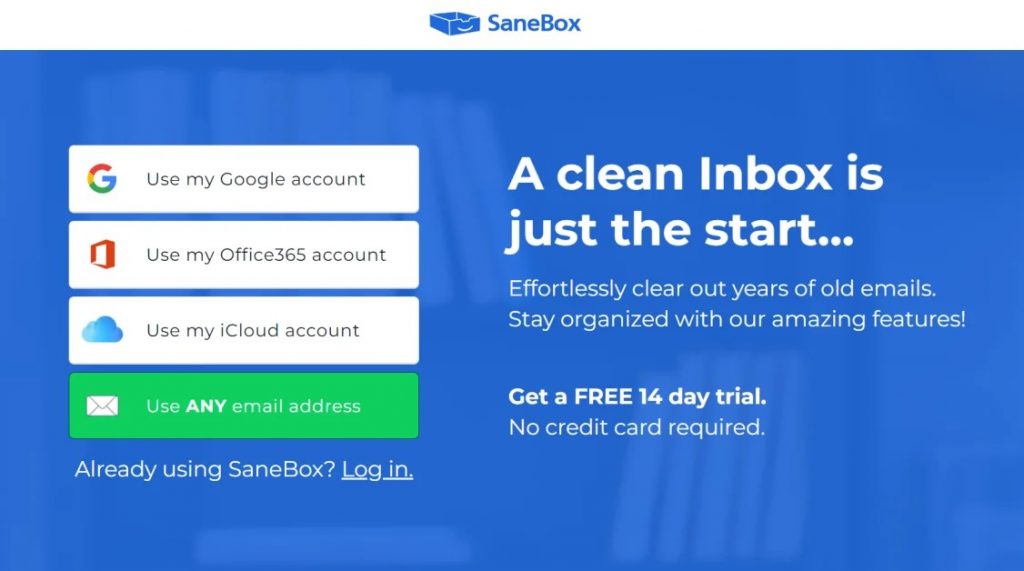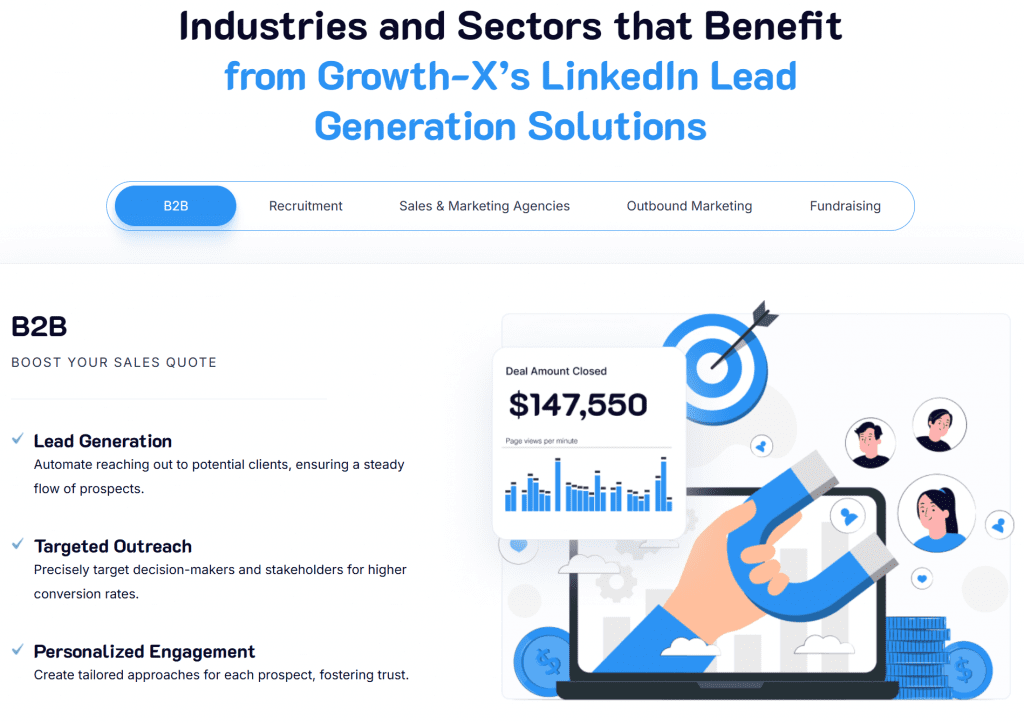Diversity and inclusion (D&I) are no longer just fashionable words—they’re essential components of successful, forward-thinking businesses. When done right, they foster innovation, improve employee satisfaction, and drive long-term business success. But achieving a diverse and inclusive workplace requires more than good intentions; it requires deliberate action and a commitment to meaningful change.
Disclosure: If you click on my affiliate/advertiser’s links, I am going to receive a tiny commission. AND… Most of the time, you will receive an offer of some kind. It’ s a Win/Win!
Over the years, I’ve come to understand the benefits of diversity and inclusion in the workplace firsthand. A team with diverse perspectives isn’t just more creative—it’s more resilient. And let’s not forget: it’s also what employees and customers now expect. In fact, companies with diversity and inclusion policies in the workplace outperform their competitors financially and are better equipped to adapt to a rapidly changing world.
Still, implementing D&I strategies can be challenging. Resistance to change, cultural misunderstandings, and unconscious bias often stand in the way. As the Chinese proverb goes, “千里之行,始于足下”—“A journey of a thousand miles begins with a single step.” This rings especially true when it comes to creating a diverse and inclusive workplace—small, consistent steps lead to big transformations over time.
In this article, we’ll explore how to build a workplace where everyone feels valued and respected. Whether you’re looking to implement diversity and inclusion training in the workplace or want to understand how to overcome resistance to diversity, this guide is packed with actionable advice and real-life examples.

Table of Contents
1. The Definition of Diversity and Inclusion in the Workplace
Breaking down what D&I means and why it’s important for businesses today.
2. Benefits of a Diverse and Inclusive Workplace
Exploring the positive impacts of D&I on innovation, employee engagement, and business success.
3. Examples of Diversity and Inclusion in the Workplace
Real-life stories of businesses thriving through D&I initiatives.
4. How to Create a Diverse and Inclusive Workplace
Practical steps for building an environment where everyone feels valued.
5. Diversity and Inclusion Policies in the Workplace
Why policies matter and how to craft effective ones.
6. Diversity and Inclusion Training in the Workplace
The role of training in addressing unconscious bias and fostering cultural awareness.
7. Overcoming Resistance to Diversity
Strategies to address pushback and build support for D&I initiatives.
8. Cultural Diversity: A Key Component of Inclusion
How cultural diversity enhances workplace creativity and problem-solving.
9. The Role of Leadership in Driving Diversity and Inclusion
Why leadership commitment is crucial for lasting change.
10. Measuring the Impact of Diversity and Inclusion
Tools and metrics to assess the success of your D&I efforts.
11. Summary and Conclusion: Embracing Diversity and Inclusion for a Better Workplace
1. The Definition of Diversity and Inclusion in the Workplace
To understand why diversity and inclusion in the workplace is essential, it’s important to define what these terms truly mean. Diversity refers to the presence of differences within a given setting—whether it’s race, gender, age, sexual orientation, disability, or cultural background. Inclusion, on the other hand, ensures that those differences are valued, respected, and fully integrated into the workplace. Together, they create an environment where everyone feels welcome, respected, and empowered to contribute.
The definition of diversity and inclusion in the workplace goes beyond ticking boxes or meeting quotas. True inclusion is about creating a culture where diverse voices are not only heard but also given the opportunity to lead and innovate. It’s about removing systemic barriers and providing equal access to opportunities.
Take cultural diversity as an example. A workplace that embraces employees from various cultural backgrounds benefits from a wider range of perspectives. These perspectives spark creativity, improve problem-solving, and ultimately lead to better business outcomes. Studies have consistently shown that organisations with diverse teams outperform those without.
However, managing workplace diversity and inclusion is not without challenges. Misunderstandings or unconscious biases can create friction, making it crucial for organisations to commit to ongoing education and training. Leaders play a pivotal role in setting the tone, demonstrating through their actions that inclusion is a priority.
As the Swedish saying goes, “Ingen kedja är starkare än sin svagaste länk”—“No chain is stronger than its weakest link.” This reminds us that every individual in an organisation plays a role in building a truly inclusive culture.
The Spybot Corporate Edition is a complete protection package for the corporate environment, providing quality AV protection as well all of Spybot’s Advanced Tools and features such as Secure Shredder, System Repair and more. Anti-Beacon Plus is also included.
2. Benefits of a Diverse and Inclusive Workplace
The benefits of a diverse and inclusive workplace extend far beyond fulfilling corporate social responsibility goals. When organisations embrace positives of diversity in the workplace, they unlock a range of tangible and intangible advantages that drive success.
Innovation and Creativity
Teams with diverse backgrounds bring varied perspectives, leading to innovative solutions. For example, a tech company that values gender diversity is more likely to create products that resonate with a broader audience. Research shows that companies in the top quartile for ethnic diversity are 35% more likely to outperform their peers financially.
Employee Engagement and Retention
Employees who feel included are more engaged and loyal. They’re also more likely to recommend their organisation as a great place to work. The benefits of diversity and inclusion in the workplace include higher retention rates, which save businesses the costs associated with high turnover.
Stronger Brand Reputation
Consumers today value ethical practices. Companies with diversity and inclusion policies in the workplace are seen as progressive and socially responsible, making them more attractive to customers and investors alike.
Improved Problem-Solving
Diverse teams are 87% better at making decisions. Why? Because they consider multiple angles and reduce groupthink. This ability to address challenges comprehensively gives inclusive workplaces a competitive edge.
Financial Performance
Finally, there’s the bottom line. Companies with inclusive practices see an average of 19% higher revenue. The benefits of a diverse workplace are clear: they drive both innovation and profitability.

3. Examples of Diversity and Inclusion in the Workplace
Real-life examples of diversity and inclusion in the workplace illustrate how these principles can transform organisations.
Example 1: Microsoft
Microsoft actively recruits neurodiverse employees through its Autism Hiring Program. This initiative not only provides opportunities for individuals on the autism spectrum but also enhances the company’s ability to solve complex technical challenges.
Example 2: Accenture
Accenture has implemented diversity and inclusion in the workplace training as part of its core strategy. The company mandates unconscious bias training for all employees and has set measurable diversity targets.
Example 3: Starbucks
Starbucks fosters inclusion through its internal Employee Resource Groups (ERGs), which support underrepresented communities within the company. These groups help create a sense of belonging and provide a platform for employees to voice their concerns.
Example 4: Google
Google’s D&I initiatives focus on inclusive hiring practices and fostering cultural awareness. Their commitment to creating a diverse and inclusive workplace is reflected in their annual Diversity Reports, which detail progress and areas for improvement.
Example 5: The Body Shop
The Body Shop’s “Open Hiring” model eliminates traditional interviews for entry-level positions, focusing instead on a willingness to work. This inclusive approach has increased workplace diversity and reduced turnover.
These organisations demonstrate that investing in D&I isn’t just the right thing to do—it’s a powerful business strategy.

4. How to Create a Diverse and Inclusive Workplace
Building a diverse and inclusive workplace doesn’t happen overnight—it requires deliberate planning, consistent action, and a genuine commitment to fostering equality. Whether you’re a small business or a multinational corporation, the process starts with leadership and extends to every corner of the organisation.
1. Assess Your Current Workplace Culture
Begin by evaluating your organisation’s existing policies, practices, and demographics. Are certain groups underrepresented? Are there barriers preventing employees from contributing fully? Conduct anonymous surveys or focus groups to gather honest feedback on where your workplace stands.
2. Set Clear Goals
Next, define what success looks like for your organisation. For example, your goals might include increasing the representation of women in leadership roles or ensuring employees from diverse backgrounds feel valued and included. Use metrics to track progress over time.
3. Educate and Train
Diversity and inclusion in the workplace training is a critical step. Provide workshops that cover topics like unconscious bias, cultural competency, and effective allyship. Equip employees and leaders with the tools to navigate sensitive conversations and build stronger connections.
4. Revamp Hiring Practices
Review your hiring processes to ensure they promote inclusivity. For example, anonymising CVs can reduce bias, while diverse interview panels can ensure fair assessments. Additionally, ask diversity interview questions that reflect your organisation’s commitment to D&I.
5. Foster Open Dialogue
Create spaces where employees feel comfortable sharing their experiences and ideas. This could include Employee Resource Groups (ERGs), town halls, or informal discussions. As the Chinese proverb goes, “智慧是听得见所有的声音”—“Wisdom is hearing all voices.” Inclusive workplaces value input from every employee.
Actionable Tip: Celebrate World Diversity Day, held every year on May 21st, in your workplace by organising activities that highlight different cultures, traditions, and perspectives. This not only raises awareness but also reinforces your commitment to diversity.

5. Diversity and Inclusion Policies in the Workplace
Strong diversity and inclusion policies in the workplace act as the foundation for any successful D&I initiative. These policies outline an organisation’s commitment to fostering equality and provide guidelines for ensuring fairness across all aspects of business operations.
1. Anti-Discrimination Policies
Start with clear policies that prohibit discrimination based on race, gender, age, sexual orientation, religion, disability, or any other protected characteristic. These policies should be communicated to all employees and enforced consistently.
2. Equal Opportunity Statements
Your hiring practices should reflect a commitment to providing equal opportunities for all candidates. An inclusive job description avoids biased language and highlights your organisation’s values.
3. Flexible Work Arrangements
Recognise that diversity includes different needs. Policies that support flexible schedules, remote work, or accommodations for disabilities make it easier for all employees to thrive.
4. Reporting Mechanisms
Create clear procedures for reporting discrimination or harassment. Employees should feel safe and supported when raising concerns, knowing their issues will be addressed impartially.
5. Accountability Measures
Leadership accountability is critical. Regularly review policies, assess their effectiveness, and make adjustments as needed. For example, linking bonuses to D&I performance can motivate leaders to prioritise inclusivity.
Actionable Tip: Include D&I policies in your employee handbook and discuss them during onboarding to ensure every team member understands your organisation’s values.
6. Diversity and Inclusion Training in the Workplace
Education is the cornerstone of any successful D&I initiative. Diversity and inclusion in the workplace training equips employees with the knowledge and skills needed to navigate cultural differences, address biases, and foster inclusion.
1. Unconscious Bias Training
Everyone has biases, whether they realise it or not. Training sessions that address unconscious bias can help employees recognise their own assumptions and take steps to overcome them.
2. Cultural Awareness Workshops
Cultural awareness training helps employees appreciate the richness of diverse perspectives. These workshops often include role-playing exercises, case studies, and discussions that build empathy and understanding.
3. Inclusive Leadership Development
Managers and leaders have a unique responsibility to model inclusive behaviour. Training programs that focus on inclusive leadership can help them foster trust, manage diverse teams effectively, and create a sense of belonging.
4. Conflict Resolution Skills
Misunderstandings are inevitable in any workplace, especially one with diverse perspectives. Equip employees with the skills to resolve conflicts constructively and turn challenges into opportunities for growth.
5. Ongoing Learning Opportunities
D&I training shouldn’t be a one-off event. Offer continuous learning opportunities, such as online courses, guest speakers, or resource libraries, to keep the conversation alive.
Actionable Tip: Partner with external organisations to bring in expert trainers who can provide fresh insights and strategies tailored to your workplace.

7. Overcoming Resistance to Diversity
Implementing diversity and inclusion policies in the workplace often encounters resistance. Change, even when positive, can feel threatening to those who are used to the status quo. Overcoming this resistance requires empathy, education, and strategic communication.
1. Understand the Root of Resistance
Resistance often stems from fear of the unknown or misconceptions about D&I initiatives. Some employees might feel these changes will reduce their opportunities or impose unfair advantages for others. Address these concerns openly and provide clear explanations about the benefits of diversity and inclusion in the workplace.
2. Lead with Empathy
Change can be uncomfortable. Managers should acknowledge employees’ concerns and engage in honest conversations about the importance of inclusion. Drawing parallels to leadership and emotional intelligence can be helpful (see “Business Judgment: A Critical Skill for Leaders”).
3. Share Success Stories
Highlighting examples of diversity and inclusion in the workplace from other organisations can help employees see the tangible benefits of these efforts. For instance, companies like Microsoft and Starbucks have successfully navigated these challenges, proving that inclusion benefits everyone.
4. Provide Ongoing Education
Regular diversity and inclusion in the workplace training can help address unconscious biases and foster understanding. Employees who feel informed and involved are less likely to resist change.
5. Create Ambassadors for Inclusion
Identify employees who are passionate about D&I and empower them to champion these initiatives. These ambassadors can act as bridges between leadership and the wider team, fostering buy-in from hesitant colleagues.
Actionable Tip: Host team discussions around World Diversity Day to celebrate progress and reinforce the importance of D&I.

8. Cultural Diversity: A Key Component of Inclusion
Cultural diversity enriches the workplace by bringing varied perspectives, experiences, and ideas. It fosters innovation and enables businesses to serve diverse markets effectively. However, it also requires sensitivity and thoughtful management.
1. Embrace Multicultural Communication
Different cultures have unique communication styles, which can lead to misunderstandings if not managed properly. Training employees in cross-cultural communication is essential for fostering an inclusive environment.
2. Celebrate Differences
Cultural celebrations and traditions can be wonderful ways to showcase diversity. For example, some businesses host events for Lunar New Year, Diwali, or Black History Month can educate employees and strengthen bonds.
3. Build Diverse Leadership
Representation matters. Promoting employees from underrepresented backgrounds into leadership positions demonstrates a commitment to inclusion. This also aligns with strategies for fostering innovation (“Innovation and Entrepreneurship: Fostering a Culture of Innovation”).
4. Address Language Barriers
Language can be a significant barrier to inclusion. Offering language support, such as translation tools or language classes, can help employees feel more confident and connected.
5. Leverage Global Talent
Hiring internationally can broaden a company’s horizons. Remote work has made it easier than ever to tap into talent from across the globe (see “Leveraging Remote Work Models for Business Efficiency”).
Actionable Tip: Create a multicultural resource hub with information on different cultures, languages, and customs to promote understanding and respect.
9. The Role of Leadership in Driving Diversity and Inclusion
Leadership commitment is the cornerstone of any successful D&I initiative. Leaders set the tone for the organisation, influencing how employees perceive and engage with these efforts.
1. Lead by Example
Leaders must embody the values of diversity and inclusion in their actions and decisions. Whether it’s attending diversity and inclusion training in the workplace or openly discussing their own growth journey, their example sets the standard.
2. Communicate the Vision
A clear vision for an inclusive workplace should be communicated at every level. Employees need to understand how these initiatives align with the company’s broader goals (see “Scaling Your Startup: Strategies for Sustainable Growth”).
3. Allocate Resources
Leaders must allocate time, funding, and personnel to ensure the success of D&I programs. This includes investing in training, hiring experts, and regularly reviewing progress.
4. Foster Psychological Safety
An inclusive workplace is one where employees feel safe sharing their ideas and feedback without fear of judgment or retaliation. Leaders play a critical role in creating this environment.
5. Hold Themselves Accountable
Leaders should regularly assess the impact of their D&I efforts and be willing to adjust as needed. Transparency in these assessments builds trust within the organisation.
Actionable Tip: Host quarterly leadership forums to review progress on D&I goals and share lessons learned.
10. Measuring the Impact of Diversity and Inclusion
To ensure your D&I initiatives are effective, it’s crucial to track their progress. Measurement not only demonstrates the success of these efforts but also identifies areas for improvement.
1. Use Employee Feedback
Conduct regular surveys to gauge employee sentiment about inclusivity. Are employees feeling valued? Do they feel represented? Feedback is an invaluable tool for refining your approach.
2. Track Workforce Demographics
Monitor the diversity of your workforce across different levels, from entry-level positions to leadership roles. Are you seeing improvements in representation?
3. Assess Engagement Metrics
Engagement levels often correlate with inclusivity. Higher engagement scores typically indicate a positive workplace culture where employees feel included.
4. Analyse Turnover Rates
High turnover among certain demographics can signal underlying issues. Identifying these patterns allows organisations to address gaps in their D&I strategies.
5. Leverage D&I Software
Tools like BambooHR and Workday can help organisations track diversity metrics and evaluate the impact of diversity and inclusion in the workplace.
Actionable Tip: Share progress reports with employees to celebrate wins and maintain momentum. Transparency builds trust and encourages continued participation.
11. Summary and Conclusion: Embracing Diversity and Inclusion for a Better Workplace
Diversity and inclusion aren’t just ideals—they’re imperatives for building a thriving and forward-thinking workplace. By fostering an environment where every individual feels valued, businesses not only unlock innovation and creativity but also position themselves as leaders in their industries. The benefits of a diverse and inclusive workplace are far-reaching, impacting employee satisfaction, customer loyalty, and even financial performance.
Yet, achieving this requires intentional effort. From diversity and inclusion policies in the workplace to ongoing education and training, organisations must commit to real, measurable change. It’s not about perfection but progress—taking consistent steps to create a culture that reflects the values of equity and respect. As the Finnish saying “Pienistä puroista syntyy suuri joki” reminds us, “Small streams make a mighty river.” Every small action contributes to a larger impact.
The road to inclusivity isn’t without its challenges. Resistance, unconscious biases, and systemic barriers are all real hurdles. However, by leveraging tools like diversity and inclusion training in the workplace and fostering open dialogue, businesses can overcome these obstacles. Leaders play a critical role here, setting the tone and holding themselves accountable for driving progress.
As we’ve seen from the real-world examples of diversity and inclusion in the workplace, success isn’t just possible—it’s already happening. Companies like Microsoft, Starbucks, and Accenture have shown how thoughtful strategies can lead to tangible results. Their stories remind us that embracing diversity isn’t just good for employees; it’s good for business.
The time to act is now. Whether you’re crafting your first diversity and inclusion policies in the workplace or refining your existing efforts, every step matters. Let’s create workplaces where everyone has the opportunity to thrive—because when we build inclusive cultures, we all win!
Enhance your business acumen skills further by learning about these topics:
- How Live Shopping Can Skyrocket Your Small Business Sales: The Ultimate Guide to Getting Started
- Turn AI Anxiety into Competitive Advantage: How to Future-Proof Your Workforce for the AI Revolution
- Unlock Profit: Calculate Customer Lifetime Value & Maximize Growth
- Creating a Customer Persona: A Step-by-Step Guide On How To Do It
- Unleashing the Power of Digital Signage: The Best Software to Transform Your Business


 The
The 





